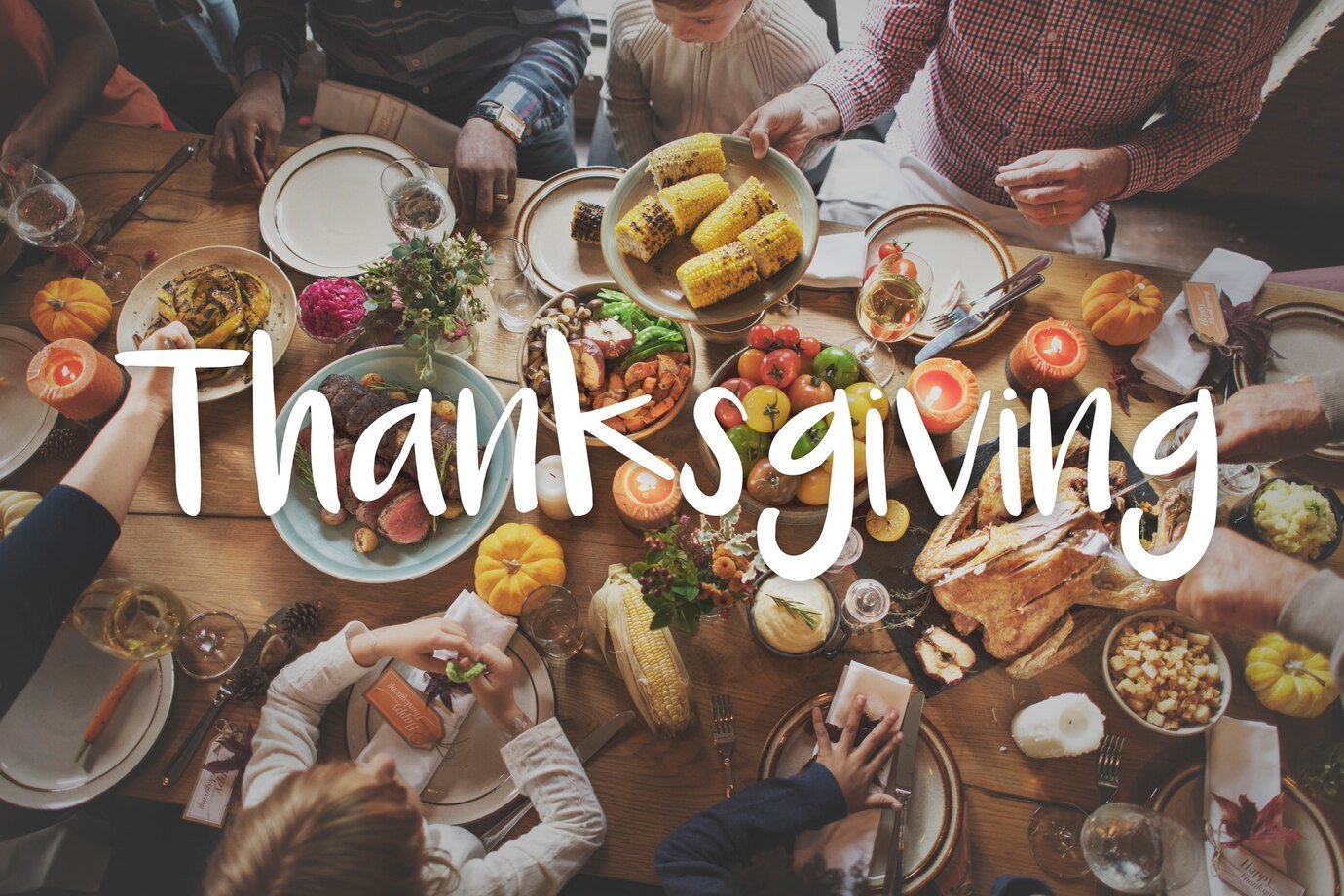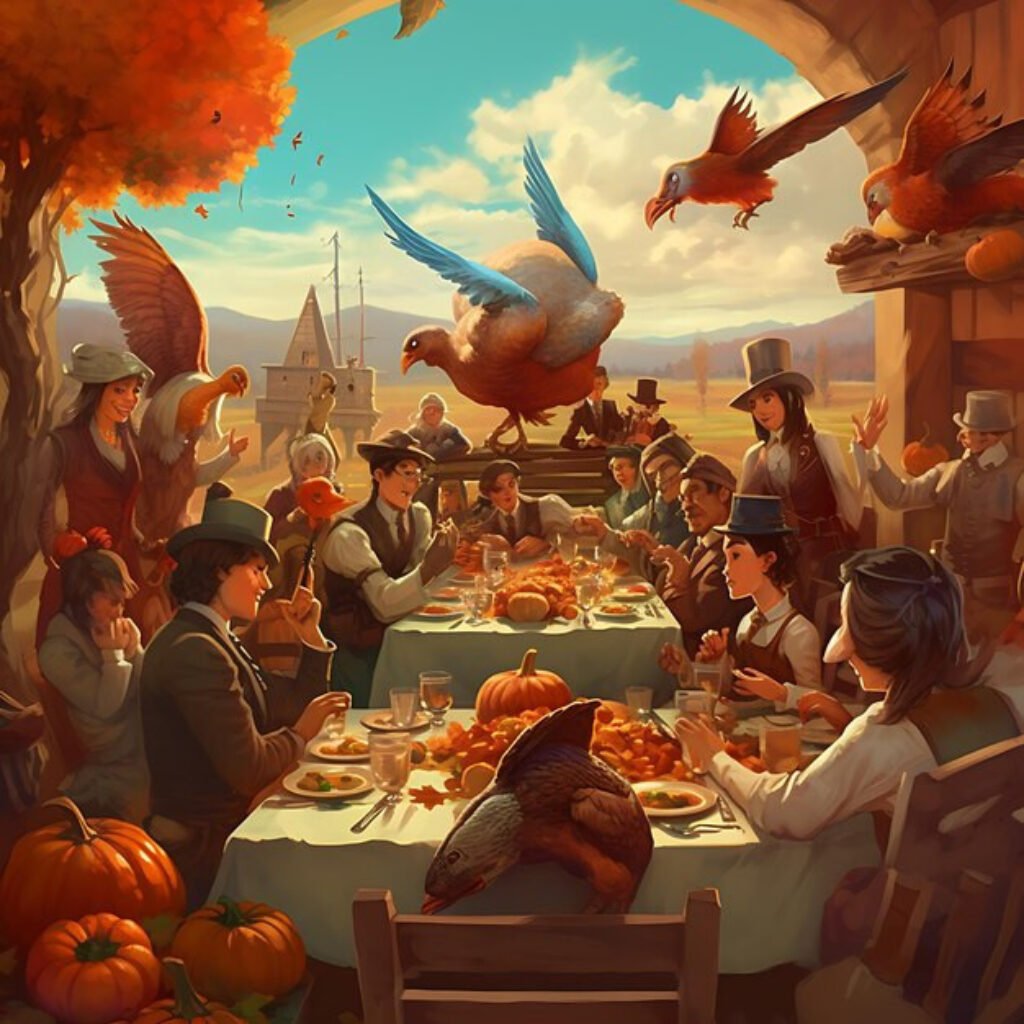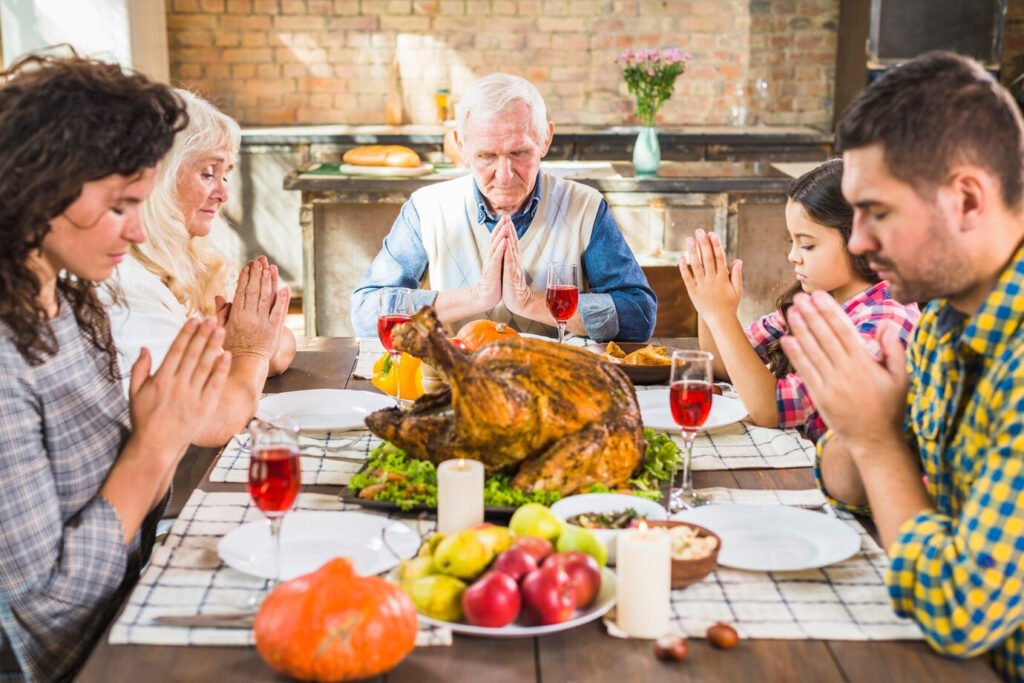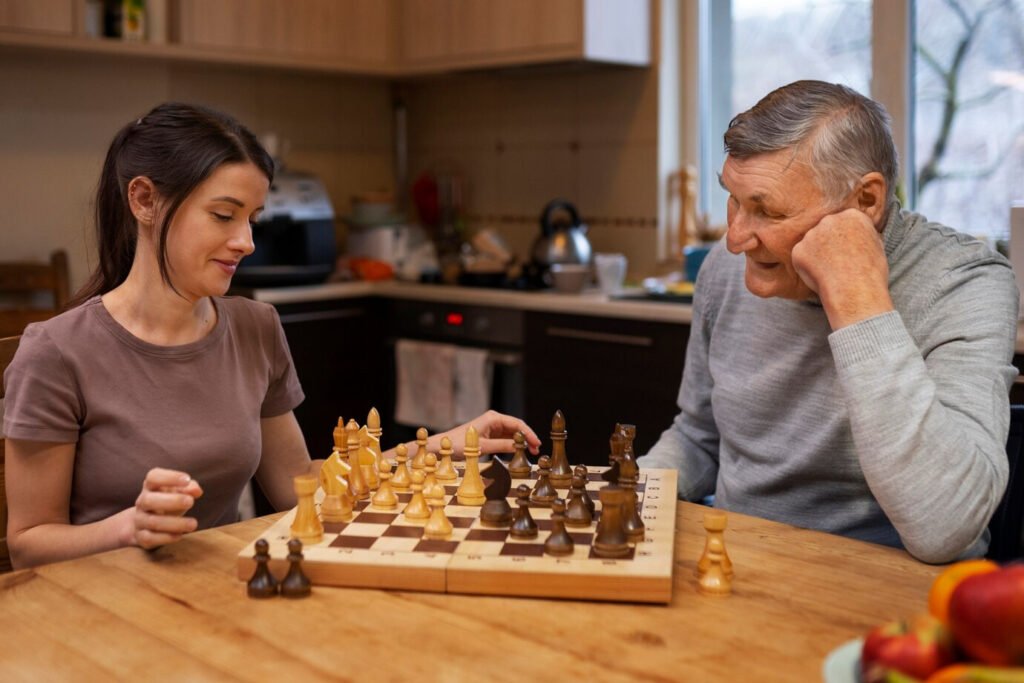The Story Behind Thanksgiving: History, Traditions, and Meaning of an Evolving American Holiday

Thanksgiving is among the most beloved and popular holidays in the United States and Canada. But what is the story behind this autumn celebration of harvest, family, and gratitude?
Contents
The History of the First Thanksgiving
The story behind Thanksgiving begins over 400 years ago when a group of English Protestants known as the Pilgrims arrived in North America to escape religious persecution.
In September 1620, 102 Pilgrims set sail on the Mayflower ship from Plymouth, England. After a treacherous 66-day journey across the Atlantic Ocean, they dropped anchor in Provincetown Harbor in Massachusetts.
The Pilgrims aimed to establish their colony in Northern Virginia, but dangerous shoals and heavy winds forced them to settle at the site of modern-day Plymouth, Massachusetts. Unprepared for the bitter cold of New England, nearly half the Pilgrims perished that first winter. Without help from the native people, it’s likely that none would have survived.
In the spring of 1621, a Patuxet man named Tisquantum, also known as Squanto, came upon the weakened English settlers and served as a translator between the colonists and the Wampanoag Confederacy.
Having learned English during his abduction in 1614, Squanto taught the Pilgrims how to farm corn, extract sap from maple trees, catch fish, and avoid poisonous plants. His skills and knowledge were crucial to the Pilgrims’ survival.
That autumn, after the Pilgrims’ first successful corn harvest, Governor William Bradford organized a three-day harvest celebration to thank God and the Wampanoag people. Around 90 Wampanoag inhabitants, including their chief Massasoit, joined the Pilgrims for feasting, games, and entertainment.

This event is now remembered as America’s “First Thanksgiving”, though it was likely not considered the beginning of the story behind Thanksgiving.
The meal itself consisted of fowl, deer, and fish, alongside crops like corn, barley, beans, and peas. This feast was made possible by the agricultural wisdom imparted by the Wampanoag tribe. Their support ensured the colony’s success through the brutal first year.
The alliance between the English and Wampanoag people lasted over 50 years, one of the few examples of harmony between European settlers and Native Americans.
The Evolution of Thanksgiving Over Time
The story behind Thanksgiving is one of continuous evolution. Though English settlers and Native Americans broke bread in 1621, Thanksgiving did not become an official national holiday for over 200 years.
Colonists in New England held irregular Thanksgiving feasts during the early 1600s. Various colonies and states celebrated “Thanksgiving days” periodically, often after events like military victories or abundant harvests.
In 1789, George Washington proclaimed the first nationwide Thanksgiving celebration to mark the adoption of the U.S. Constitution. But Thanksgiving only became a truly national holiday through the efforts of writer and editor Sarah Josepha Hale.
In 1846, Hale petitioned five presidents to recognize Thanksgiving as a national holiday. She argued such a holiday would unite the country amid growing divisions prior to the Civil War. Finally moved by her appeals, President Abraham Lincoln proclaimed the first national Thanksgiving in 1863, to be held every November.
Lincoln sought to unite a fractured nation through a holiday inspired by the 1621 harvest celebration between the Pilgrims and Wampanoag people. Succeeding presidents followed his lead, annually declaring Thanksgiving Day. However, the date was not fixed until 1941, when Franklin D. Roosevelt established Thanksgiving as the fourth Thursday in November.
Since Lincoln, the story behind Thanksgiving has expanded far beyond the Pilgrims’ feast. Traditions have evolved with the times:

- Family and Community: Thanksgiving remains grounded in showing gratitude through food and fellowship. Gathering with loved ones reflects the Pilgrims’ celebration alongside the Native people.
- Parades and Football: Public festivities like the Macy’s Parade and football games expanded the celebration outside the home. These traditions took hold in the early 20th century.
- Turkey and Trimmings: Roast turkey, stuffing, mashed potatoes, and pumpkin pie became staples, though not part of the original meal. Magazines and cookbooks popularized these dishes in the late 1800s.
- Gratitude and Charity: Services like volunteering and donations highlight Thanksgiving as a time for community and selflessness.
- Inclusivity: Americans now acknowledge shortcomings in the Pilgrims’ legacy and make efforts to celebrate respectfully and welcome all backgrounds.
The holiday continues evolving as America becomes more socially conscious, diverse, and progressive. But the story behind Thanksgiving is still the foundation for gratitude and fellowship.
Different Ways Thanksgiving is Celebrated Today
The story behind Thanksgiving festivities now varies widely, though several traditions remain ingrained in American culture.
Most families gather for a bountiful, leisurely meal in the afternoon. Traditional dishes include roast turkey, gravy, stuffing, mashed potatoes, cranberry sauce, and an assortment of pies.
Watching the Macy’s Thanksgiving Day parade, televised from New York City each morning, is another ubiquitous custom. Many Americans also enjoy football games after gorging themselves.
However, not all customs are so conventional. In recent decades, more households have adopted new approaches:
- Alternative Menus: Vegans, vegetarians, and those with dietary restrictions often opt for main dishes like Tofurky instead of turkey. Creative takes on side dishes are also popular.
- Charity Events: Many spend part of the day volunteering at soup kitchens, shelters, and community meals. Donations to charity drives also increase during the holidays.
- Early Bird Shopping: Eager shoppers may head to malls and online sales at midnight following Thanksgiving dinner, though this controversial trend is fading.
- Non-Traditional Activities: Rather than lounging and overeating, some families go hiking, cycling, play sports, or find other active outlets. A fun idea is to explore ymimports.com for classic board games the whole family can enjoy together. Use Ymimports coupon codes to get the best prices on quality games made for everyone.

For kids, Thanksgiving break represents vacation. Children may create arts and crafts or enjoy a slice of pumpkin pie, fewer vegetables, and no schoolwork.
Worldwide Celebrations
The story behind Thanksgiving has also spread far beyond the United States. Canadians celebrate Thanksgiving in October, while Germany holds Erntedankfest, or “harvest festival of thanks,” each October. Grenada and Liberia also observe national days of Thanksgiving.
These global celebrations incorporate local twists but retain the core themes of gratitude, abundant harvest, and community. As Thanksgiving adapts to an increasingly connected world, people continue finding new ways to express thankfulness.
Read more: The 12 Best Cities to Spend Thanksgiving
The Meaning of Thanksgiving
What does Thanksgiving signify today, four centuries after the story behind Thanksgiving? The holiday holds both universal and personal meaning.
For many indigenous people, Thanksgiving is a reminder of colonialism’s devastation. Activists have long protested the whitewashing of complex encounters between Native Americans and settlers into a feel-good fable. In 1970, the United American Indians of New England declared Thanksgiving a National Day of Mourning to memorialize indigenous lives lost.
But most Americans consider Thanksgiving a treasured time to reconnect with family and express gratitude. The holiday weekend represents the busiest travel period nationwide as people journey home to celebrate. Thanksgiving kicks off the holiday season and is often more significant than Christmas for bringing far-flung families together.
Preparing and sharing food as a community recalls the feast between the Wampanoag people and Pilgrims centuries ago. Thanksgiving dinner highlights America’s agricultural abundance and multicultural heritage. Many families incorporate dishes from their ethnic backgrounds, like Cuban black beans or Italian ciabatta stuffing.

While savoring the turkey, loved ones go around the table sharing what they are most thankful for in the past year. Expressions of gratitude remind us to appreciate health, family, and simple joys we often overlook in busy day-to-day life. Pausing to count our blessings resonates through the ages from the Pilgrims’ autumn feast so long ago.
For many, Thanksgiving also brings solemn reflection on those who are hungry, homeless, or alone during the holidays.
The essence of Thanksgiving—community, gratitude, and charity—that emerged from the original story behind Thanksgiving inspires many to give back through volunteering or donations.
The Story Behind Thanksgiving: Final Words
The story behind Thanksgiving is multifaceted, blending history and harvest, controversy and community. At its core, the holiday signifies a timeless human urge to gather with others, reflect on hardship and abundance, and express joy and gratitude for life’s basic gifts.
Thanksgiving continually evolves along with American culture, retaining this essence while welcoming new perspectives. The Pilgrims’ harvest celebration endures as a shared tradition binding past and future.
As we look ahead, Thanksgiving will likely continue to change and take on new meanings, while still honoring its origins and celebrating human connections. Regardless of how it evolves, the origin of Thanksgiving represents a message of hope, resilience, and unity that resonates through the centuries.





